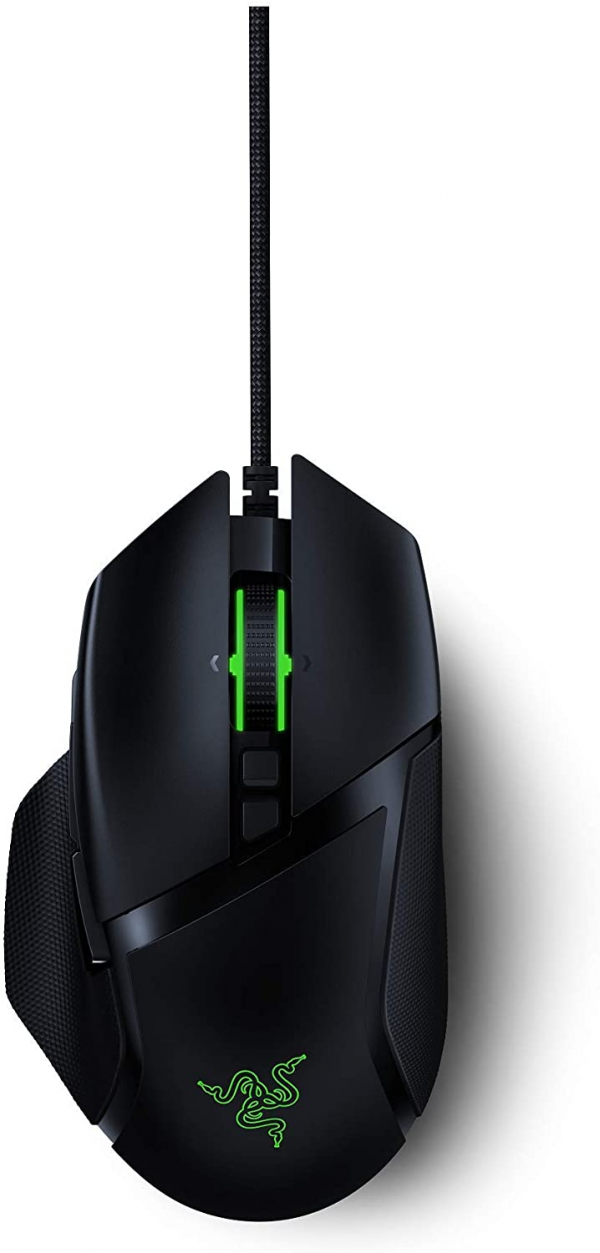Razer
Razer Basilisk V2 mouse: even more speed for FPS players
Aprox. 86€ - see price -
See specificationsLaunched 2 years ago, the Razer Basilisk evolves into V2 with a Focus + optical sensor and optical switches, but it also hides subtle novelties that can make the difference. What to make of it the ultimate mouse for FPS?
Positive points
Excellent optical sensor.
Comfortable grip.
Quite light considering its benefits.
Adjustable hardness dial.
Very flexible cable that makes you forget.
Nice finishes.
Bad points
A longer optional lever for the "sniper" button would have been welcome for smaller hands.
Our review
Presentation
For this second version of the Basilisk, Razer has chosen to integrate its latest innovations, including an even more efficient Focus + optical sensor and mechanical-optical switches supposed to ensure both better reactivity and better longevity. This mouse is launched at the recommended price of € 89.99.
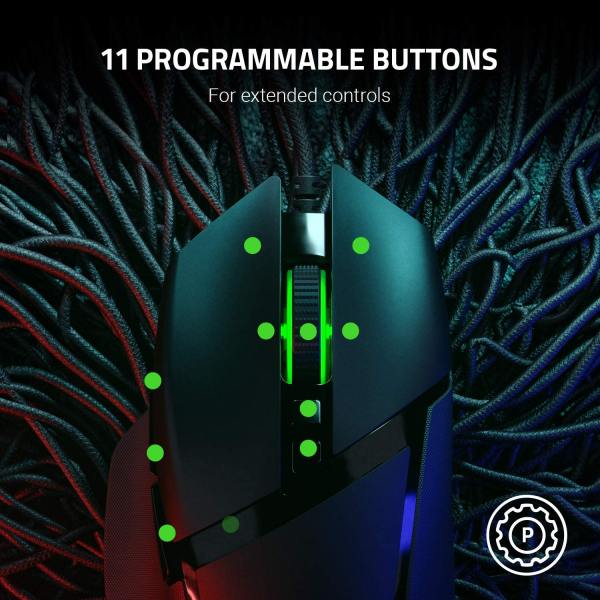
Ergonomics
The design of the Razer Basilisk V2 is almost identical to that of the V1, so much so that we initially thought to invite you to refer to the test of the first Basilisk of the name to discover our detailed opinion on its ergonomics. It actually goes further than that, which ultimately justifies a full test of this new version.
At first glance therefore, difficult to differentiate this V2 from the first version. We find this same form visibly very inspired by the G502 from Logitech and the same matte plastic, slightly rough and not very sensitive to fingerprints. On the aesthetic level, however, Razer has refined its copy to give it a slightly more luxurious appearance. Always as well finished, it is thus a little less sober than its predecessor, adorned with small shiny black bands judiciously placed on the top of the hull so as not to suffer too much from fingerprints. The elastomeric material covering the slices also changes texture, its relief made up of tiny facets being conversely a little more discreet.
The buttons on the edges agree with the shiny plastic. If they are visually less well integrated than those of the first Basilisk, they gain in width and are better separated. We gain accessibility. Same observation for the buttons arranged in front of the wheel, more spaced, but this time smaller and more sunken in the shell than those of the V1, which limits the risk of activating them inadvertently. However, they are still just as difficult to reach in the heat of the moment, forcing us to sharply bend the index finger. Since they are used by default to increase and reduce the sensitivity of the sensor on the fly, we will not really complain.
And for good reason, another button is precisely there to be used in full game, the "sniper" button. Arranged at the end of the left edge, this small lever is activated with the thumb. A real plus for FPS players who can thus reduce the sensitivity of the sensor to a very low level the time to adjust a shot, before instantly regaining normal sensitivity once the button is released. If this function is not new on a mouse - Corsair using it for several years on its M65 mice -, it is here well implemented. The small metal lever is easily inserted thanks to a magnetic system. You can choose not to use it, a small rubber cover that closes the hole hosting the "sniper" button.
The main buttons are not left out, they are even pampered since they take advantage of the new mechanical-optical switches from Razer. Very reactive, they are also theoretically less prone to breakdowns, since they are now activated with a light beam and no longer mechanically. Razer also guarantees them for 70 million activations, against 50 million for the switches of the first Basilisk, which were already very enduring.
Another improved element on this V2, the wheel gains horizontal scrolling. It is associated with 2 more switches which activate when the wheel is tilted to the left and right. The hardness of the wheel is always adjustable via another small wheel under the mouse. We can thus choose between very marked notches or, on the contrary, a totally smooth scrolling. No way to benefit from the ultra-fast scrolling speed of the disengageable wheel used on some Logitech mice like the G502. The Basilisk's wheel therefore remains a little less practical in office automation.
Despite an increasing length (130 mm against 124 mm), the Basilisk V2 can still fit most hands and is even more welcoming thanks to its reduced width to 60 mm (against 75 mm). The grip is therefore as good, whether you put the whole palm or just the fingertips, well helped in this by the hollow and non-slip edges. The thumb is also well received, taking advantage of a growth in the left edge. This V2 is even more manageable than the V1, since it has been considerably reduced. From the 110 g of the Basilisk, we pass indeed to 94 g, which puts the Basilisk V2 in the right way, at a time when most of its competitors also weigh less than 100 g.
A reasonable mass which, combined with the good glide of the new white skates introduced on this V2, make the movements even more fluid. The new, more flexible "Speedflex" braided sheath cable also contributes to this good maneuverability by being forgotten.
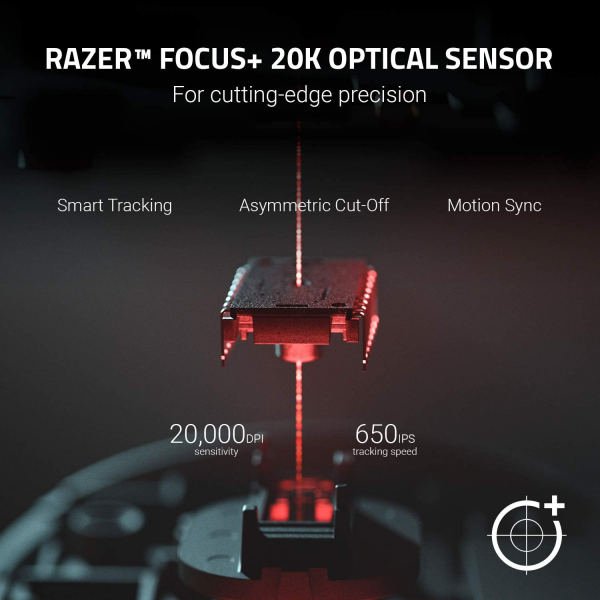
Precision
Exit the already very powerful "5G" sensor of the Basilisk, make way for the Focus + of this Basilisk V2. Behind this name hides in fact the PMW3399 from PixArt, also used in the Razer Viper Ultimate.
In order to offer even more precision, Razer indicates that it has worked with PixArt to provide this Focus + with "all new intelligent functions". The Focus + thus benefits from an "intelligent tracking" technology consisting of an automatic surface calibration. Objective: minimize the lift-off distance to maximize accuracy by reducing parasitic movements that occur when you lift the mouse to place it on the mat.
This lifting distance also becomes "asymmetrical", that is to say that it is possible to choose the cut-off height of the sensor in the event of lifting (for example 3 mm), as well as that of recovery (for example 1 mm ). Enough to allow players to customize the sensations, especially for those who want to keep a high cutting height.
Finally, "motion synchronization" is supposed to provide "more coherent monitoring", according to Razer, by synchronizing the signals emitted by the mouse with those of the PC for "greater responsiveness of the sensor". This last function leaves us even more skeptical than the other 2. Razer seems above all to seek to put names on optical tracking optimizations which certainly result in even more precise tracking, but which do not change much in practice. The main point is that this new sensor is even better than the already excellent optical sensors used previously. And we will not even dwell on the maximum speed and sensitivity values (respectively 16.51 m / s and 20,000 dpi) which are only there to shine on the technical sheet, no human being capable of exploiting such performances. As such, Razer is still right to insist more on its optical tracking functions than on the raw performance of the sensor.
In terms of surface recognition, this remains perfectly correct for an optical sensor dedicated to video games. Apart from glass and overly shiny materials, the mouse works on most surfaces. However, we can only recommend the use of a good mouse pad to optimize accuracy and glide while reducing the wear of the pads.
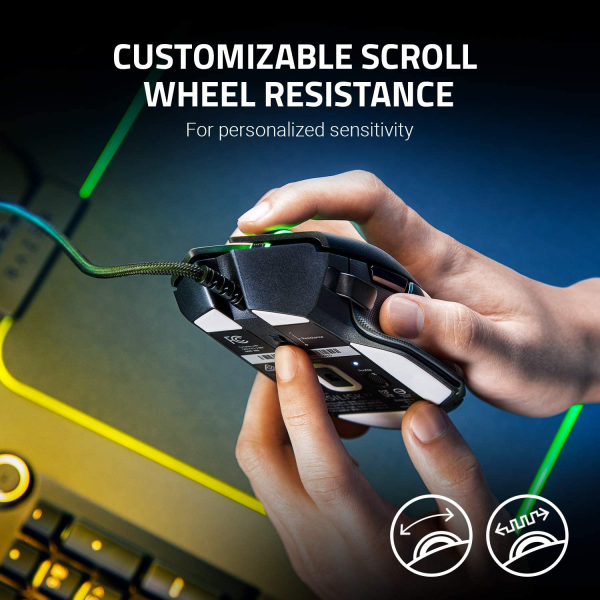
Conclusion
Behind a slight evolution of design, the Basilisk V2 hides deeper improvements which make it a mouse of choice for lovers of FPS. Even more precise, it is even more convincing than its model (the G502 Hero from Logitech) in terms of pure play, thanks in particular to its reduced mass and its adjustable hardness dial. A great success.
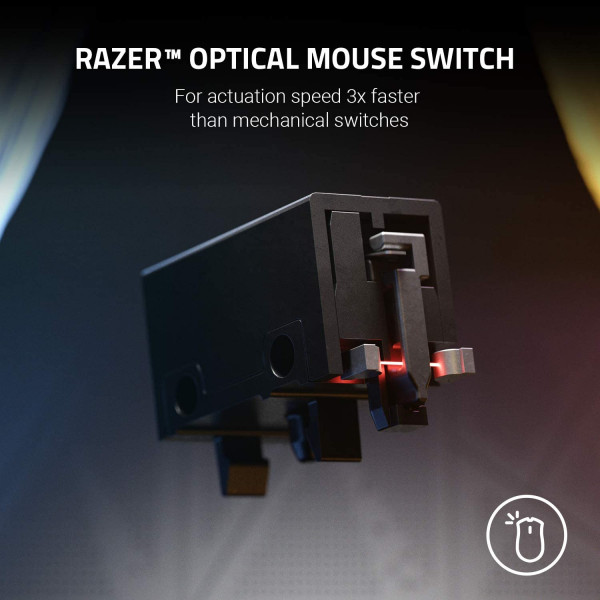
Specifications

